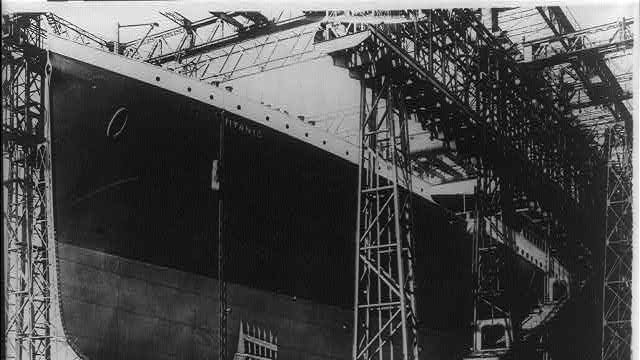
The enduring global fascination with the story of the Titanic continues, and now a team of imagining experts, scientists, and historians have embarked on a mission to produce the most detailed photographic record ever made of the ship's remains.
This will be the first commercial mission to the Titanic since the tragic Titan novel submersible imploded on its way down to the wreck site on June 18 2023. All five members of the crew were killed, including 19-year-old Suleman Dawood.
The most recent team will employ state-of-the-art technology to scan every crevice of the historic liner, with the goal of discovering exactly why it sank.
The expedition is organized by for-profit RMS Titanic, Inc, a U.S company that has sole salvage rights, and which, to date, has recovered 5,500 objects from the Titanic wreck. It claims that this mission is about reconnaissance only.
The salvage company collects artifacts from the Titanic for public displays and exhibitions.
A duo of remotely operated robotic vehicles will dive down to the seabed to take millions of high-resolution images and make a comprehensive 3D model of the wreck. The vehicles will be used to look for signs of deterioration, new debris fields, and newly formed openings that could be used to send one of them inside the wreckage.
Co-expedition lead Davi Gallo explained to the BBC:
"We want to see the wreck with a clarity and precision that's never before been achieved.”
One of the five men who died aboard the Titan submersible last year was Paul-Henri (“PH”) Nargeolet, director of research at RMS Titanic Inc, who was meant to lead this expedition.
A joint memorial service will be held at sea to commemorate the five men who died, as well as the 1,500 passengers and crew who went down with the Titanic in 1912.
When was the Titanic discovered
The Titanic set out on its maiden voyage April 10, 1912, and tragically sank on April 15. Up to 1,500 people lost their lives, making it the deadliest sinking of a single ship at the time.
The real number of lives lost is unknown because of various factors such as inaccurate passenger and crew lists, caused by misspellings, omissions, aliases, and a failure to count musicians and other contracted employees. The Titanic passengers included some of the richest people of the time, while the third class suffered greatly, with only 174 of its approximately 710 passengers allowed to board the lifeboats.
The wreckage was discovered September 1, 1985 by two research centers, the Woods Hole Oceanographic Institution (WHOI) from Massachusetts, and the French National Institute of Oceanography (IFREMER) from Toulon.
Funded by the U.S Office of Naval Technology, the teams used newly developed imaging systems to locate items on the sea floor.
After many complications, with just 12 allocated days left of the mission, and after the French team had been forced to pull back, the American team gambled on a radical approach to achieve their goal with the limited time they had left.
Rather than search for one large object – the huge hull of the Titanic – the team used their imaging tools to look for smaller items of debris.
They employed ANGUS (Acoustically Navigated Geological Underwater Survey) and the newly developed deep-towed sonar and video camera system Argo, to scour the seafloor for objects dispersed from the wreck.
They followed the debris trail all the way to the Titanic, and at just after 1:00am on September 1, 1985, and under more than 12,400 feet of water, one of the ship’s boilers was discovered.
Video filming from Argo and 35mm filming from ANGUS were utilized in the last four days of the voyage.
This new mission might answer long-held questions about how the Titanic sank, and what happened in those last moments.







